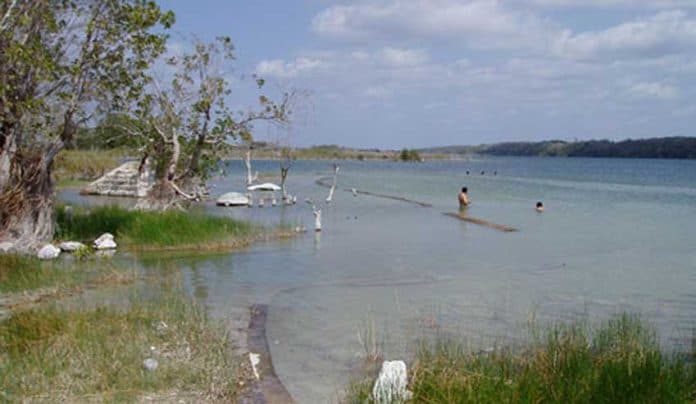Did drought lead to the collapse of the Maya civilization more than 1,000 years ago?
New, quantitative data that shows the severity of the drought at the time of the civilization’s demise provides further evidence that it did.
Since the 1990s, when researchers were able to piece together climate records for the period, drought has been considered a likely cause for the Maya civilization’s downfall during the terminal Classic period between 800 and 1,000 AD.
Invasion, war, environmental degradation and collapsing trade routes have also been considered as possible reasons why the Maya people abandoned their limestone cities in the ninth century and their dynasties ended, marking a major political collapse.
But now, researchers from the University of Cambridge and the University of Florida have quantified rainfall, relative humidity and evaporation at the time by developing a method to measure the different isotopes of water trapped in gypsum, a mineral that forms during times of drought, when water levels in lakes and rivers drop.
They used the method at Laguna Chichankanab, a lake in the northeast of Quintana Roo on the Yucatán peninsula where the Maya civilization was based.
Consequently, the researchers found that annual rainfall decreased between 41% and 54% relative to today during the time of the civilization’s collapse.
During peak drought conditions, there were periods with up to 70% less rain while relative humidity decreased by 2% to 7% compared to today, according to the results published in the journal Science.
Nick Evans, a PhD student in Cambridge’s Department of Earth Sciences and the paper’s first author, explained that this study is the first to quantify the drought conditions that the Maya people experienced at that time.
“The role of climate change in the collapse of Classic Maya civilization is somewhat controversial, partly because previous records are limited to qualitative reconstructions, for example whether conditions were wetter or drier,” he said.
“Our study represents a substantial advance as it provides statistically robust estimates of rainfall and humidity levels during the Maya downfall.”
In fact, the researchers built a complete model of hydrological conditions during the time of the collapse by measuring three oxygen and two hydrogen isotopes trapped within the gypsum they collected.
When gypsum forms, water molecules are incorporated directly into its structure and the water records the different types of isotopes that were present at the time of its formation.
“This method is highly accurate and is almost like measuring the water itself,” Evans said.
In addition to providing another piece of evidence that points to drought being behind the downfall of one of the world’s great civilizations, the quantitative climate data can be used to better predict how the drought conditions may have affected agriculture, including staple crops grown by the Mayan people such as maize.
Mexico News Daily
